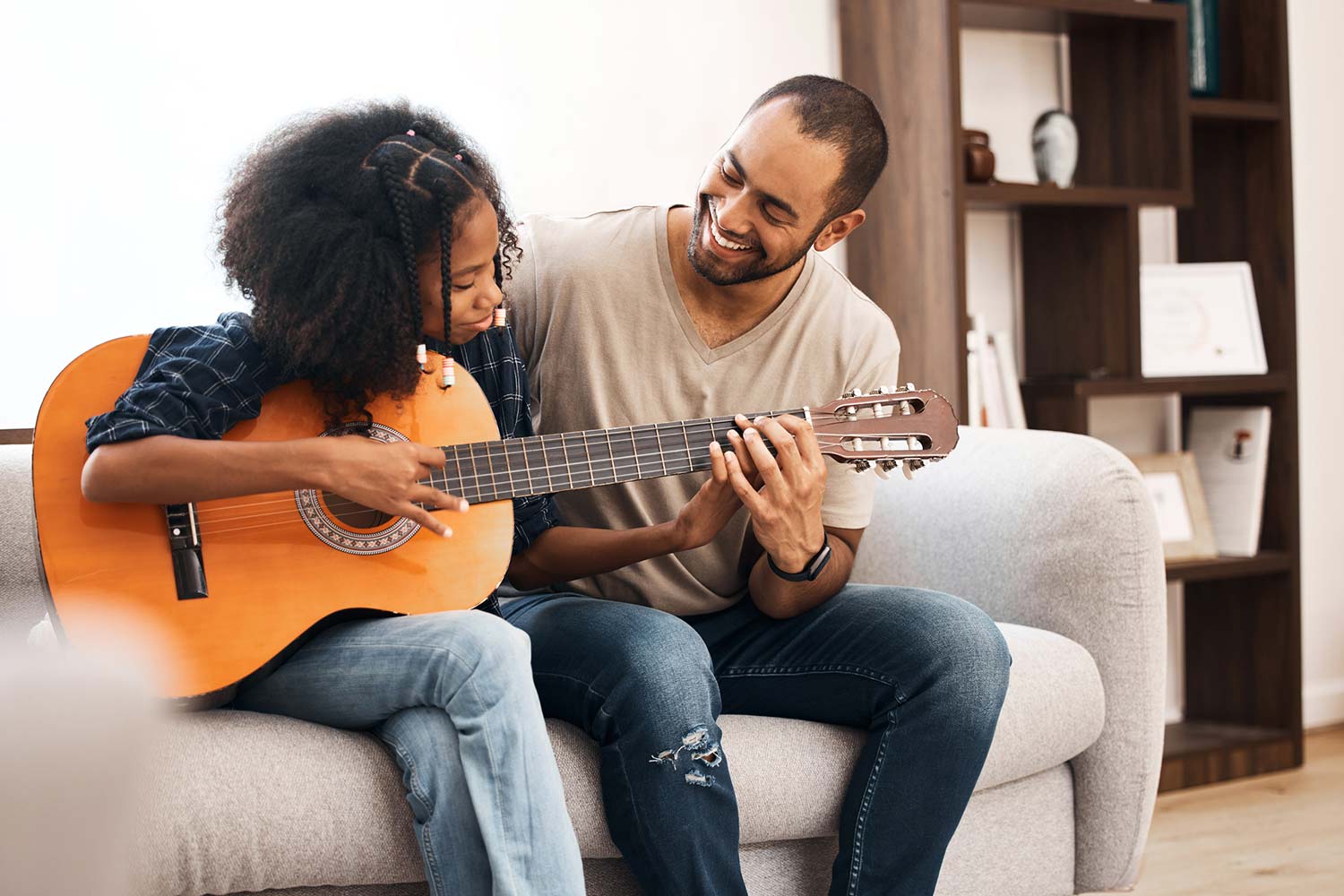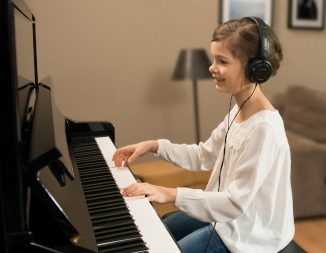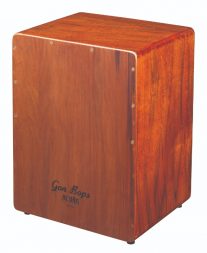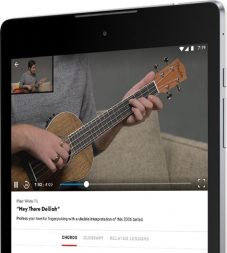 Children have a very special way of absorbing things, and the more you foster their curiosity, the more they will develop long-lasting skills. It’s very impressive to see how children absorb all sorts of information from the environment and learn to interpret it naturally. By continually exposing your kids to different stimuli, they will expand their inner understanding and eventually be able to easily navigate various disciplines and subjects. Music is no exception. It’s a very good idea to develop musicality in a child because it will bring them a lot of joy, social opportunities, and inner satisfaction. It’s also easy to gamify practicing a musical instrument. Additionally, there are a lot of fun tools available to us nowadays. This makes it all a much less painful process than in the past. Here are a few tips on how to get your little ones into music.
Children have a very special way of absorbing things, and the more you foster their curiosity, the more they will develop long-lasting skills. It’s very impressive to see how children absorb all sorts of information from the environment and learn to interpret it naturally. By continually exposing your kids to different stimuli, they will expand their inner understanding and eventually be able to easily navigate various disciplines and subjects. Music is no exception. It’s a very good idea to develop musicality in a child because it will bring them a lot of joy, social opportunities, and inner satisfaction. It’s also easy to gamify practicing a musical instrument. Additionally, there are a lot of fun tools available to us nowadays. This makes it all a much less painful process than in the past. Here are a few tips on how to get your little ones into music.
Play music often and create memories
One of the most important things to keep in mind is that children are very aware of their environment. As is often said, they are like sponges, and they will notice when a certain type of music is playing. It’s a good idea to simply put on some tunes when they are around. For example, if they help out with dinner or set the table, make sure something is playing in the background. If it’s habitual, they’ll start to notice more and more things about the music and eventually learn to recognize the elements from song to song, and artist to artist. These are actually the baby steps of ear training, and childhood is the best time to develop it.
 Another important aspect is to mix up the genres you play. You probably have varied musical tastes, so why not explore them with your child? It’s not necessarily important to go through all the great classical composers; this can be tedious as an introduction. Make sure you explore different styles and artists to give them a good sample of what’s out there. A healthy diet of pop, disco, folk, country, Broadway/musicals, rock, and jazz is an excellent way to show them all the different flavours. Try to have fun with it; dancing to the music can really foster some appreciation, thanks to the ear to body connection.
Another important aspect is to mix up the genres you play. You probably have varied musical tastes, so why not explore them with your child? It’s not necessarily important to go through all the great classical composers; this can be tedious as an introduction. Make sure you explore different styles and artists to give them a good sample of what’s out there. A healthy diet of pop, disco, folk, country, Broadway/musicals, rock, and jazz is an excellent way to show them all the different flavours. Try to have fun with it; dancing to the music can really foster some appreciation, thanks to the ear to body connection.
Associating music to memories is also a great way to kick-start some musicality. For example, one of my first musical memories was listening to my parents’ cassette collection in the car on road trips. Some of those songs are completely engraved in my head and evoke a lot of pleasant emotions. Singing along on a long car ride is still one of my favourite things to do to this day. You can find other occasions to recreate this type of experience. For example, you could play soothing melodies at nap time, energetic music in the morning during breakfast, or upbeat party songs on Fridays.
Keep instruments around the house
Once you’ve established some connection to music, it’s nice to have some kind of instrument to play with. This is a lot easier if you play an instrument yourself. For example, having a piano and practising from time to time can really spark your child’s curiosity. It might make them want to try it for themselves. You can then easily create games for them to learn the notes, melodies, rhythms, etc. This type of connection is invaluable, and you’ll even benefit from it yourself. You should also let them simply play with it and see what sound they can come up with. Think of it as a natural exploration—something that kids do all the time with most things they encounter.
 If you don’t play any instruments, there are other options available. Although the piano and keyboards are very good for developing a complete understanding of all the musical parameters, you don’t have to start there. There are other easy instruments to learn you could start with. Ukuleles, for example, are fun to play, easy on the fingers, and you can quickly learn the chord progressions of your favourite songs and sing along. They’re also a great gateway to guitars. Another good choice is percussion. With a simple set of affordable bongos, a djembe, or maybe even a cajon, you can play along your favourite recordings. This will cultivate a solid sense of time instinctively.
If you don’t play any instruments, there are other options available. Although the piano and keyboards are very good for developing a complete understanding of all the musical parameters, you don’t have to start there. There are other easy instruments to learn you could start with. Ukuleles, for example, are fun to play, easy on the fingers, and you can quickly learn the chord progressions of your favourite songs and sing along. They’re also a great gateway to guitars. Another good choice is percussion. With a simple set of affordable bongos, a djembe, or maybe even a cajon, you can play along your favourite recordings. This will cultivate a solid sense of time instinctively.
It’s important to actively participate in the learning yourself. This is a great activity to engage in with your kid, and it will solidify their interest. Sitting down together in the evenings and on weekends will go a long way. You’ll also develop some skills yourself.
Investigate learning platforms
Once your child settles on an instrument, it’s time to explore possibilities. A great way of doing this is by looking at all the various learning platforms we have access to nowadays. Only on YouTube there is an endless number of lessons for every type of instrument imaginable. There are some very efficient and dynamic teachers out there with awesome channels. A quick way to get started is to simply type in the name of your child’s favourite song and add easy piano, guitar, or whichever instrument they want to play it on. You’ll most likely find multiple videos on how to easily learn it without much effort.
 If your kid is already browsing and using apps, there are many great platforms out there to start learning the basics of your instrument. For beginner guitarists, for example, Fender developed an outstanding app called Fender Play. It gives step-by-step instructions on how to play. Competent and fun teachers will also show you easy versions of your favourite songs. Check out my full review here.
If your kid is already browsing and using apps, there are many great platforms out there to start learning the basics of your instrument. For beginner guitarists, for example, Fender developed an outstanding app called Fender Play. It gives step-by-step instructions on how to play. Competent and fun teachers will also show you easy versions of your favourite songs. Check out my full review here.
No matter which instrument you pick, the introduction you’ll give your child to music will follow them for the rest of their life. Music is a great gift that brings people together, soothes, brings joy, and simply enhances the human experience. If you feel that it’s too much to handle yourself, you can always look up musical awakening classes. These are usually run by great, motivated teachers and put kids together in a very stimulating environment. Make sure you don’t overlook the power of music.
Check out all the musical instruments at Best Buy online.



